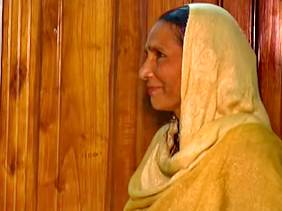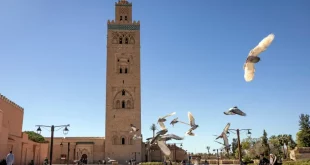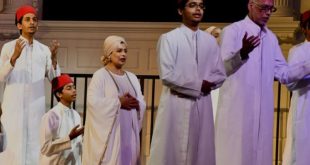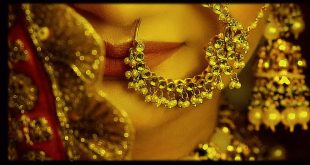 Little is it known that the Muslim community of Sri Lanka also have a caste group. This is the Osta caste who have not traditionally intermarried or interdined with the rest of the community. They are very much part of the local Muslim community but also distinct in their own way, and this is what makes them unique.
Little is it known that the Muslim community of Sri Lanka also have a caste group. This is the Osta caste who have not traditionally intermarried or interdined with the rest of the community. They are very much part of the local Muslim community but also distinct in their own way, and this is what makes them unique.
The Osta may best be described as a barber caste. This small community is to be found wherever there exist considerable Muslim settlements. However it is not only hair they shave off. Their functions go beyond this, very much like the barbers of mediaeval Europe who practiced cupping. Ever wondered why to this day barber poles in the West have red and white stripes? The answer’s simple, they also practiced cupping which involved taking out bad blood as a form of medical treatment. Even in India, a barber is still known as hajjam, which comes from the Arabic word hijama or cupping because this is what he used to do in the olden days.
So now let’s see what our local barber caste do. The menfolk known as Osta-mama (Osta Uncle) circumcise Muslim boys and until recently shaved the heads of Moor boys and men. Their womenfolk known as Osta-mami (Osta Aunt) shave the heads of both male and female infants which is an Islamic religious requirement and circumcise female infants, sometimes also piercing their ears as part of the package.
The demand for the services of the Osta-mamas in the olden days was much more greater than at present since it were they who regularly shaved the heads of Muslim men and boys of the villages, a practice that has since died out. Circumcisions were also always performed by them while nowadays it is common to resort to qualified doctors to get it done.
The role of the womenfolk known as Osta-mamis however remains strong since it is still they who shave the heads of infants and circumcise girls. This in no way resembles the barbaric practice of Female Genital Mutilation practiced in certain African countries. Rather it is a harmless procedure involving a ritual nick in the vulval region to draw out a little blood. Sometimes it may involve the proper Islamically prescribed form which involves removing the prepuce of the clitoris, a practice that may be likened to male circumcision and is even practiced by modern American women for purposes of cleanliness and enhanced sex life, a cosmetic procedure known as hoodectomy.
Interestingly these dexterous dames were first noticed by the colonial authorities only in the 1881 census which found that there were 17 female Moor Barbers in the country at the time. Of the four female barbers in the Southern Province, and the four in the North Western Province, all were Moors, while in the Central Province, out of four female barbers, three were Moors. A report on the census The Ceylon Handbook & Directory 1883-84 edited by A.M & J.Ferguson observed of them: “We suppose there are special reasons why there should be female barbers amongst the Moors”.
So how did they get their name? We once met a traditional Ostamami of Henamulla named Sithy Sumrah who gave us an interesting clue as to the origin of the term Osta. She said that her folk were called Osta or Ostadu. The latter term we can be certain is the older one and derives from the Arabic ustad meaning ‘master’, ‘teacher’, ‘artisan’ ‘celebrated doctor’. In Persian ustad means ‘a master’,‘teacher’ ‘artisan’ as well as ‘barber’
This is also supported by the evidence of the French Explorer François Pyrard, the author of the Discours du Voyage des François aux Indes Orientales (1619) who says that when the children are grown up, they pay a profound deference to the operator who circumcised them, and call him ‘master’, and this was very likely expressed in the Arab-Persian form ustad.
The lady was right after all – Osta originally meant a master or expert in his (or her) profession!
Extracted from Serendib Culture Club FB Page (Courtesy: Asiff Hussein)
 Sri lanka Muslims Web Portal Diversity and Inclusiveness
Sri lanka Muslims Web Portal Diversity and Inclusiveness



